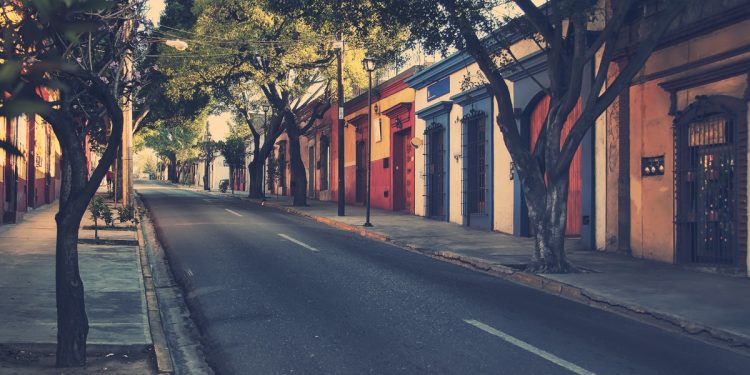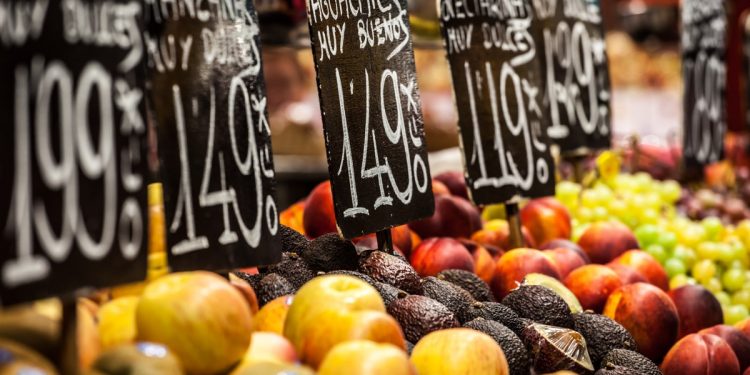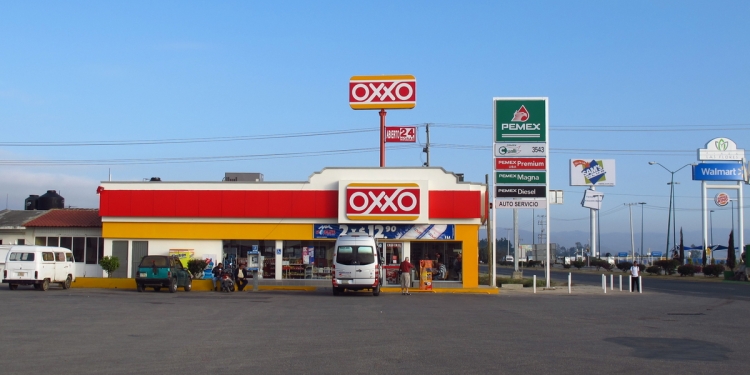It sometimes seems that every time you look around there’s a new ice cream parlor or store offering the latest in exotic flavors.
Mexicans don’t eat that much ice cream
The proliferation of fancy brands —Häagen-Dazs, Ben & Jerry’s, Santa Clara— might lead you to the wrong conclusion about just how much ice cream Mexicans consume.
According to some reports, Mexicans only eat on average 1.5 liters of ice cream a year, a small fraction of what Americans and New Zealanders —the world’s top consumers— guzzle down.
Also somewhat surprising, for a relatively low-wage country, is the amount of business done by ice cream brands of which a single serving cone or tub can cost anything from three to four US dollars.
Market studies here can be incomplete in a country where there is a large informal economy, and products such as ice cream and popsicles are often made by individuals whose sales are off the marketing-experts’ radar screens. It’s ice-cream franchises, however, that are expected to generate the growth in product consumption in the country.
Buying ice-cream in Mexico
If you visit or live in a large city or tourist resort, the most likely place you’ll find ice cream is at one of these chains, many of which are located at malls. Local grocery stores —las tienditas— convenience stores such as Oxxo and 7-Eleven, as well as a majority of pharmacies have fridges with prepackaged ice creams and popsicles, mostly in single servings. Multi-packs and larger presentations are found in the freezers at supermarkets.
The best known brand of ice cream in Mexico, and apparently the one with the largest market share is Helados Holanda. These tend to be cheaper than the boutique brands, whether bought in individual servings or in larger packages. This makes a lot of sense when buying ice cream for a family, but for those particular about quality —all natural ingredients, for example— this apparently won’t do, and those who can afford it prefer to buy the expensive stuff.
Flavored popsicles are popular in Mexico
It’s almost impossible not to come across a popsicle shop —paleteria— called La Michoacana. These shops sell a wide range of fruit-flavored paletas as well as cream ones, paletas de crema. A word of advice, go for the water ones. Although originally from the state of Michoacán, apparently just about anyone can call their paleteria La Michoacana, as this interesting report suggests.
In smaller towns, and still occasionally in large cities, you can find the traditional ambulant purveyors of helados, or nieves in the case of lime sorbets, being served from a pushcart or from a container placed in ice on the front of an adapted bicycle. These vendors are famous for crying out “de limón la nieveeeeee!!!”
Soft ice-cream for passing refreshment
Soft ice cream from a machine is also growing in popularity, not only because of the flavor but also because of the price. McDonald’s offers a range of these ice creams at its restaurants, but also has separate ice cream counters at many of its outlets (and kiosks at shopping centers) for those who just want to pick-up some passing refreshment. If your budget is somewhat strained and it’s hot out, this can be quite a useful option.
Mexico in your inbox
Our free newsletter about Mexico brings you a monthly round-up of recently published stories and opportunities, as well as gems from our archives.






You should had mentioned a bit about Traditional Ice-Cream. Ice-Cream consumption is not officially that high but the reason is that even to this day a corner “paletero” with his pushcart will attract more attention than a fancy ice cream parlor. Commercial Ice-Cream is for those that want something sweet and cold quick, but not the choice if you can get something local and probably handmade and more natural.
There are some local large and even well known Ice-Cream Parlors or “Heladerias” and even some have gone regional or outside the state: for a time Tepoznieves, an “heladeria”from Tepoztlan, Morelos that is well known in the State for its high quality artisan Ice-Cream going back all the way to the 19th Century opened an Ice-Cream Parlor in Merida in the late 1990s that lasted into the early 2000s but had to be closed for the huge cost of actually transporting the Ice-Cream from Tepoztlan (they were actually doing that rather than making it locally in Yucatan since the ingredients, specifically the milk, were not of the same quality or as in the case of some fruit native to Central or Southwestern Mexico or Veracruz simply was unavailable).
Also in Merida itself there is a bit of an old mini Ice-Cream culture. Ice Cream was served to the rich since the 17th Century believe it or not, during winter mostly in Mexico City, Toluca, Puebla and Jalapa and occasionally in Veracruz using ice from snow from the snow capped volcanos in the Central Cordillera. In Yucatan Ice-Cream became available when American Ice began to be imported in the 19th Century from Ice Houses in New Orleans, Mobile and Pensacola, late somewhere in the late 19th Century or early 1900s the first Ice “Factories” appeared. Around that time an old cafe began selling Ice-Cream circa 1895, then it was sold in 1906 and was renamed “El Colon” which sold French style sorbet made from locally grown tropical fruit as well as french pastry and sweets. It was located originally in front of the Plaza and it is still in operation, including one famous branch in Paseo Montejo. Among its later (but not necessarily recent) additions were custard flavors such as Crema Morisca (moorish cream, a type of pink pastry cream) and Mantecado (not sure if its the Cuban recipe or they refer to their own old fashioned vanilla ice cream powdered in cinnamon, but its ordered separately from other flavors and has an extra cost). You can also get Champolas which is about two balls of Ice-Cream in sweetened milk, which is not blended unlike a shake but allowed to slowly melt (something not hard in Merida’s hot weather since all are outdoor cafes as is the tradition, regardless of heat and mosquitoes) and flavor the milk. You can also find a very simple Ice-Cream store downtown called Polito that has been open since the 1920s but its founder and its family never really wanted to turn it into something fancy (as they could have), on the other hand they hired local vendors to tend pushcarts and sell their product all over the then small city but never opened a branch or as was the custom then a Cafe to sell their sweets. It is still in the southern downtown area in a very simple locale, but their Ice-Cream is excellent as is their variety.
At a CaliMex in Ensenada and a carton of vanilla is $11 or 199 pasos! So expensive :-/
Why do you advise going for the water-based paletas rather than the crema ones?
In Tijuana, where I live, Thrifty is the predominant ice-cream parlor and the only place I have found that carries sugar free ice-cream besides Smart and Final.
Here in Aguascalientes ice-cream is very popular. There are vendors at the square, shopping areas, mercados, and it appears that every Barrio has an helado vendor. I know of three vendors who make their ice cream and it is delicious. The flavors vary and are familiar ice cream flavors. Perhaps not as rich flavored as Blue Belle or Ben & Jerry’s but locally made and delicious.
You have to go to Dolores Hidalgo. In the zocalo there, on the 4 corners, are 4 ice cream sellers(at least there were last time I was there). They have a multitude of flavors and will give you samples of any of them. Great fun. Some are pretty good,nopal, and some were aweful,cerveza. But it’s all fun!
I thought this article was going to be all about Dolores Hidalgo’s ice cream.
Also, the flavors that exist in Mexico are very interesting including, rose petal, corn, avocado among many others.